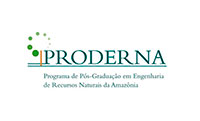WREN 2016
The Workshop on Renewable Energy Sources and Nanotechnology
MINI-COURSES

Speaker: Pranesh B. Aswath
Mini-course (a.1): STRUCTURE AND CHEMISTRY OF SOOT AND ITS ROLE IN WEAR OF DIESEL ENGINES
Summary: Environmental regulations to reduce the emissions using exhaust gas recirculation have resulted in higher soot level in the crankcase oil of diesel engines. The API CJ-4 category requires various dynamometer tests to qualify the lubricant oil. For example, GM Roller Follower Wear Test (ASTM D 5966), The Cummins ISB test (ASTM 7484), Cummins ISM test (ASTM D 7468), Mack T-12 (ASTM D 7422), Mack T-8 test (ASTM D – 5867), Mack T-11 (ASTM D- 7156) etc.
Mini-course (a.2): MECHANISM OF BONE REMODELING IN NORMAL AND DMP-1 DEFICIENT MICE
Summary: Differences in apparent and actual density have been noted in the mineralized tissue of postnatal dentin matrix protein-1 (DMP1) mice. In order to investigate this difference at the lowest hierarchical level, a XANES (X-ray Absorption Near Edge Structure) spectroscopy investigation of DMP1 null mice was performed. Female wild type (WT) and DMP1 null mice (KO) were sacrificed (21 d), stored, and the femurs (n=5) were collected, sectioned, and dehydrated. The K- and L-edges of Ca and P and the L-edge of O were obtained at the Canadian Light Source synchrotron facility. The P L-edge data (50x50µm spot size, ~10-20 nm penetration depth) showed evidence of soluble phosphate species in the KO samples, but the higher energy P K-edge data (200x50µm, ~500 nm penetration depth) showed no significant difference in the phosphate bonding structures of the WT and KO mice. The low energy Ca L-edge data showed evidence of a local depletion of Ca in the KO mice while the O L-edge data showed increased carbonate content of the KO bone. Taken together this data creates a picture of a unique local coordination of phosphorus in the mineralized tissue of the DMP1-null bone at an earlier stage in the lifecycle than the phenotype is generally observed. These changes observed in the crystal structure of the mineral matrix help explain DMP1 role in the mineralization of tissue.
In this study soot was extracted from the crankcase oil of commercially operated diesel engine during drain interval and hence represent field conditions. Soot samples were also extracted from crankcase oil from Mack T-8A, Mack T-11, Cummins ISM, Cummins ISM, GM RFWT.
The different operating conditions of these dynamometer tests such as load, speed, duration, temperature, fuel flow, crankcase temperature, EGR rate, air to fuel ratio etc. to qualify the testing lubricants might influence the interaction between diesel soot and lubricants additives chemistries and thereby modify the chemistry of the soot. In the present study, attempts have been made to establish the effect of engine parameters on the soot chemistries & structure.
Characterization of extracted soot from these standard dynamometer tests provide a better understanding of the effect of engine parameters, In addition, soot was extracted from the crankcase, cylinder and piston rings in a Mack T-12 engine. The composition, structure and morphology of the soot and wear surfaces were characterized using X-Ray Absorption Near Edge Spectroscopy (XANES), Synchrotron Radiation X-ray Diffraction (SR-XRD), Raman spectroscopy and High-Resolution Transmission Electron Microscope (HRTEM). A model has been developed to correlate the composition, structure and morphology of soot on soot induced wear using tribological testing and engine testing





.png)

Wren 2016. © All Right Reserved


